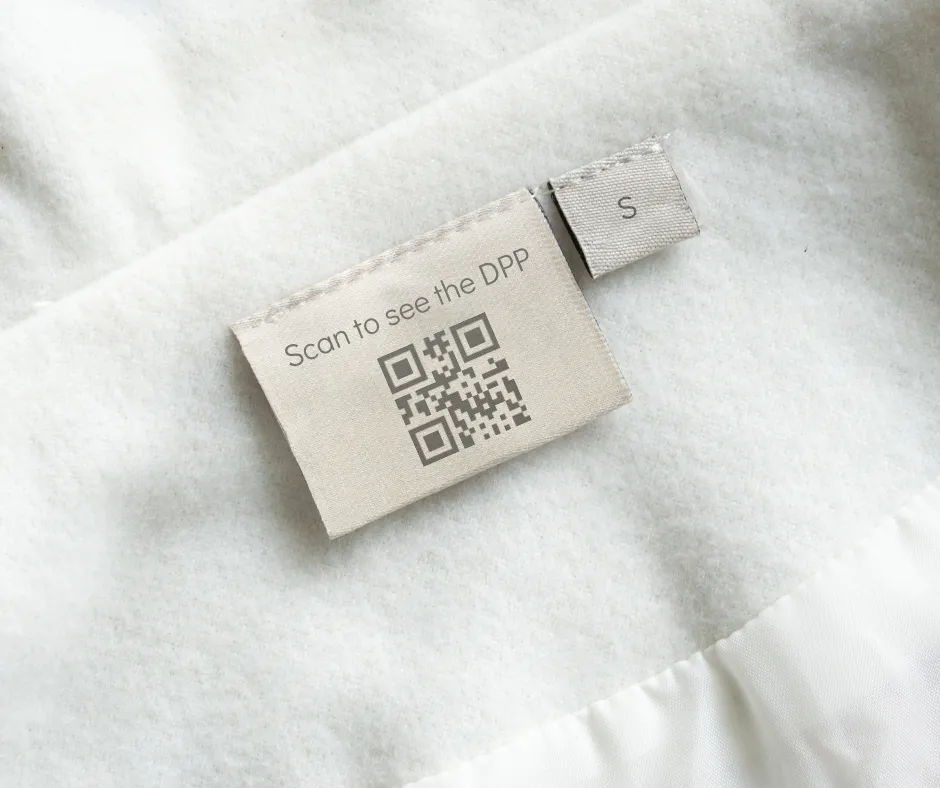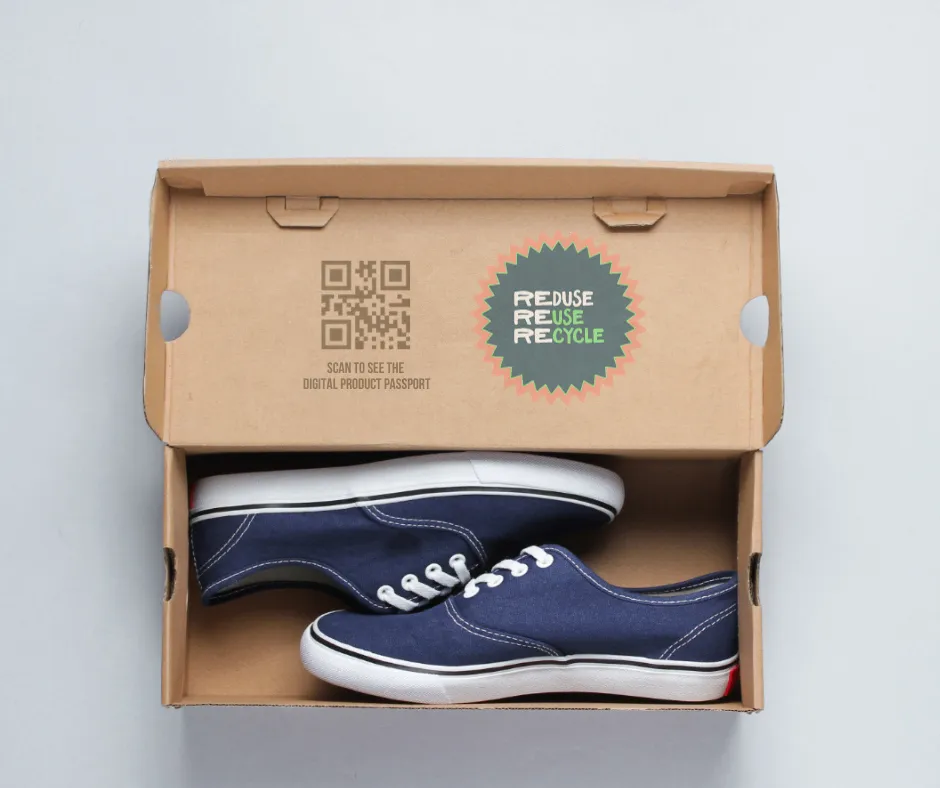

Table of Contents
1.
Benefits of QR Code Integration
2.
Why Do We Need Digital Product Passports for Clothes?
3.
The Future of Fashion and QR Codes
4.
Conclusion
The Digital Product Passport: QR Code on Clothes
In our ever-evolving world of technology, innovation continues to shape various aspects of our lives. From smartphones to smart homes, the digital realm has permeated almost every facet of our existence. One such innovation that's making waves in the world of fashion is the Digital Product Passport, often facilitated through QR codes on clothes.
What is a Digital Product Passport?
Before we delve into the intriguing world of QR codes on clothes, let's first understand what a Digital Product Passport is. Essentially, it's a digital profile that accompanies a physical product, providing comprehensive information about its origin, manufacturing processes, materials used, and more. In the fashion industry, this translates to a deeper understanding of the clothes we wear.
QR Codes in Fashion
The integration of QR codes in fashion is a burgeoning trend. No longer are QR codes just for scanning on packaged products; they're now an integral part of clothing. These small, black-and-white squares hold a wealth of information that can be accessed with a simple scan using a smartphone. This innovation is transforming how consumers interact with their clothing.
Benefits of QR Code Integration
For Consumers
For consumers, the advantages of QR code integration are abundant. They can easily access information about a garment's authenticity, care instructions, and sustainability practices of the brand. This level of transparency empowers consumers to make more informed choices about their purchases, aligning with their values and preferences.
1. Enhanced Product Knowledge:QR codes provide consumers with a wealth of information beyond authenticity and care instructions. They can learn about the garment's design inspiration, the story behind the collection, and even details about the designer. This deeper understanding enhances the overall product experience.
2. Easy Access to Reviews and Recommendations:By scanning QR codes, consumers can access user reviews and recommendations for the product. This real-time feedback from other buyers can aid in making purchasing decisions, ensuring they choose items that are well-liked and suitable for their needs.
3. Convenience in Warranty and Returns:QR codes can simplify warranty registrations and returns processes. Consumers can easily access warranty information and initiate return requests through a simple scan, reducing the hassle of dealing with paperwork and customer service.
4. Personalized Shopping Experiences:Brands can use QR codes to offer personalized shopping experiences. By tracking a consumer's previous scans and purchases, brands can suggest new products, styles, and accessories tailored to the consumer's preferences, creating a more personalized shopping journey.
For Brands
Brands are also reaping the benefits of QR code integration. They can use this technology to build trust by providing consumers with accurate information about their products. Furthermore, QR codes can be a powerful tool for post-purchase engagement. Brands can connect with consumers after the sale, offering styling tips, exclusive offers, and more.
1. Data Analytics and Customer Insights:QR code scans provide brands with valuable data on consumer behavior. Brands can gain insights into which products are most popular, what information consumers are seeking, and how often QR codes are scanned. This data can inform marketing strategies and product development.
2. Sustainable Practices Showcase:Brands committed to sustainability can use QR codes to showcase their eco-friendly practices. Consumers can learn about the brand's use of organic materials, ethical manufacturing, and sustainable packaging, which can resonate with environmentally conscious consumers.
3. Inventory Management and Stock Control:QR codes can aid brands in managing their inventory more efficiently. By tracking the scans and purchases, brands can gain real-time insights into which products are selling well and which might need restocking or clearance, leading to better stock control.
4. Enhanced Post-Purchase Engagement:Beyond offering styling tips and exclusive offers, brands can engage consumers in meaningful post-purchase interactions. This includes inviting customers to participate in surveys, provide feedback, and share their experiences, which can help refine products and services.
Why Do We Need Digital Product Passports for Clothes?
In an era where technology continuously reshapes the way we interact with the world, the fashion industry is not exempt from innovation's transformative touch. The concept of a "Digital Product Passport" for clothes, often facilitated through QR codes, has emerged as a necessity. But why do we need such a digital passport for our garments? Let's delve into the reasons behind this growing trend:
1. Transparency and AccountabilityTransparency has become a buzzword in the fashion industry, and for good reason. Consumers are increasingly conscious of the products they purchase, not just in terms of style but in how and where they are made. A Digital Product Passport offers unparalleled transparency by allowing consumers to access information about a garment's origin, manufacturing processes, and the materials used. It holds brands accountable for the authenticity of their claims regarding sustainability and ethical practices, empowering consumers to make more informed choices aligned with their values.
2. SustainabilitySustainability is a critical concern in today's fashion landscape. The environmental impact of the textile and clothing industry is substantial, and consumers are seeking eco-friendly alternatives. Digital product passports provide an avenue for brands to showcase their sustainable practices. By scanning a QR code on a garment, consumers can learn about the use of organic materials, ethical manufacturing, and the brand's commitment to reducing its carbon footprint. This transparency enables consumers to support brands that align with their sustainability goals.
3. Product KnowledgeFashion is more than just aesthetics; it's about storytelling and individual expression. A Digital Product Passport provides a platform for brands to share the story behind each garment. Consumers can access information about the designer's inspiration, the cultural significance of the design, and the materials used. This deeper understanding of the product enhances the overall experience of wearing it and fosters a deeper connection between the consumer and the brand.
4. Convenience and EngagementFor brands, Digital Product Passports offer a means of engagement with consumers that extends beyond the point of purchase. After a sale, brands can use QR codes to deliver valuable content, such as styling tips, exclusive offers, and even recommendations for complementary products. This post-purchase engagement not only enhances the consumer experience but also creates opportunities for continued brand loyalty and advocacy.
5. Consumer EmpowermentIn a world where information is power, digital product passports empower consumers to take control of their purchases. They can access product reviews and recommendations, making more informed buying decisions. This access to real-time feedback from other consumers ensures that the products chosen are well-liked and suited to individual preferences, reducing the likelihood of post-purchase regret.

L2QR
The QR code platform offers effective e-marketing solutions
Create your QR code design that will meet your brand standards with colors

The Future of Fashion and QR Codes
As QR codes on clothes become more prevalent, the future of fashion holds exciting possibilities. This technology opens doors to traceability and sustainability. Imagine being able to trace the journey of your garment, from the cotton farm to the retail shelf, all through a simple scan. This can revolutionize the way we think about fashion, making it more ethical and environmentally friendly.1. Customization and Personalization:
QR codes can enable a new level of customization. Imagine scanning a code to adjust the fit or design of your clothing even after purchase. Brands could offer tailored fashion experiences, allowing consumers to make their clothing truly unique.
2. Fashion Education:QR codes can be a gateway to fashion education. By scanning a code, consumers can access information about fashion history, the art of textile making, and even video tutorials on garment care and styling. This educational aspect can foster a deeper appreciation for fashion as an art form.
3. Circular Fashion Economy:QR codes can facilitate the transition to a circular fashion economy. Brands can encourage consumers to recycle or upcycle clothing by providing information on how to properly dispose of garments, donate them, or turn them into new products.
4. Counterfeit Prevention:The use of QR codes can significantly combat counterfeit fashion products. By scanning the code, consumers can verify the authenticity of the garment, helping to protect the brand's reputation and consumer trust.
Addressing Challenges:
1. Privacy and Data Security:To overcome privacy and data security concerns, brands need to implement robust data protection measures. Anonymizing data, providing clear opt-in choices, and ensuring that only essential information is collected can mitigate these concerns.
2. User-Friendly Interfaces:Brands should focus on creating user-friendly interfaces for consumers. The process of scanning a QR code and accessing information should be intuitive and seamless. Adequate guidance and tutorials can help consumers and brands alike navigate the technology effectively.
3. Digital Inclusivity:Brands must consider digital inclusivity, ensuring that QR code technology is accessible to all, including those with disabilities or limited access to smartphones. This may require alternative access options and accommodations.
4. Standardization:Standardizing QR code formats and information across the industry can help reduce confusion and streamline the user experience. This will also promote interoperability between different brands and retailers.

Conclusion
In conclusion, the Digital Product Passport for clothes is not just a technological novelty but a crucial tool for meeting the evolving demands and expectations of both consumers and the fashion industry. It fosters transparency, supports sustainable practices, enhances the consumer experience, and, most importantly, empowers consumers to make choices that align with their values. As this trend continues to gain momentum, it is clear that digital product passports are the future of fashion, bridging the gap between the physical garment and the wealth of information that accompanies it.